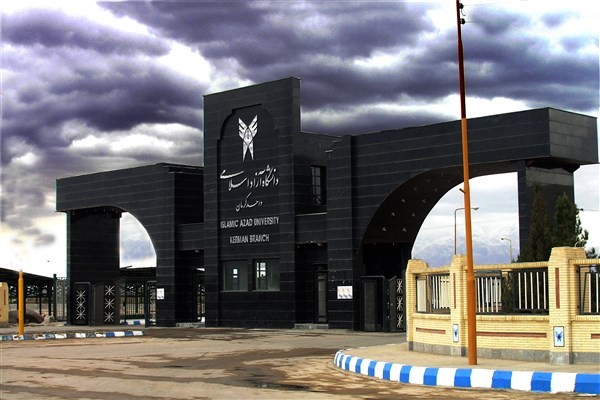Shiraz Wine Delight: A Connoisseur’s Guide to the Finest Vintages ?
The city of Shiraz, known as the city of flowers, nightingales, poetry, and literature, has long been celebrated for its wine. Shiraz wine, derived from black grapes, has been highly esteemed in both Iran and the world. One of the reasons for its popularity was the abundance of vineyards in Shiraz.
Shiraz wine, a red wine variety, is particularly noteworthy in France, a country renowned for its wines. In France, it is named Syrah and is highly favored. This Shiraz variety has also gained popularity in countries such as Argentina, Chile, Uruguay, and some European nations. Interestingly, its name first became widespread in Australia, where this grape variety became the most cultivated black grape by 1831. James Busby, during his trip to Europe, brought cuttings of this grape from France to Sydney. In the following years, it was cultivated in South Australia and became a popular grape variety in the country by 1860.
Until 1998, there was uncertainty about whether the origin of this grape was in southern France or if it had been brought from elsewhere. However, research at the University of California in that year revealed that this grape is a result of the combination of two other French grape varieties. Nevertheless, one of the main reasons for various myths surrounding this wine is the association of its name with the city of Shiraz in Iran.
The Shiraz wine is made from what?
One such myth suggests that the “Shiraz wine” was produced in the city of Shiraz, and around 600 BC, it was brought to southern France by warriors from the city during the Greek colonization period. What might be interesting for us Iranians is the unique name of this wine, taken from the name of its owner, Mr. Daryoush Khalesi. Yes, the winery or the company producing this wine belongs to an Iranian (a Shirazi) named Daryoush Khalesi.
He was an Iranian civil engineer who lived in Shiraz before the revolution. His father used to skillfully produce wine, and Daryoush, fascinated and passionate about good wine since his youth, occasionally sneaked into the cellar away from his father’s eyes. Later on, he, being knowledgeable about good wines, started collecting the best wines worldwide. With the 1979 revolution, like many other Iranians, he migrated to the United States.
Daryoush, along with his sister’s husband, initially pooled all their assets and savings to purchase a bankrupt supermarket, which eventually, with 150 branches, turned into a successful business. However, these successes were just the beginning for Daryoush Khalesi. In 1997, he officially laid the foundation for his dreamland by purchasing a large piece of land in Napa Valley, the heart of American winemaking. He himself says, “I had the dream of establishing an organization like this since my youth.” Now, with the magnificent palace inspired by the beauty of ancient Persian palaces, reminiscent of the palaces of Cyrus and Darius the Great, and possessing one of the largest, most famous, and best winemaking facilities in the world, it can be said that he has achieved what he aspired to.
“Shiraz Wine: Connecting Ancient Persia to Modern Global Winemaking”
Shiraz wine is now one of the most renowned commercial brands globally, particularly in countries like Australia and South Africa, where it holds the highest production levels among various red wines. It has also secured the top position in the export of wines from these two countries to the European market. However, what is the connection between this wine and the city of Shiraz in Iran, specifically with Shiraz wine?
From Ancient Times
Iran’s historical significance in winemaking and its heritage in the production of fermented beverages are undeniable. It is noteworthy that two of the oldest wines in human history have been found in Iran.
In the early 1960s, during excavations in the “Godin Tepe” region at the foothills of the Zagros Mountains, a jar containing remnants of wine with a history of approximately five thousand years was discovered. Archaeologists considered this finding as the world’s oldest wine.
However, just a few years later, in 1968, in the excavations of Hajji Firuz Tappeh, an ancient village in the northern foothills of the Zagros Mountains (in the present-day Kermanshah province), six clay jars were found, pushing the history of wine production back over two thousand years (more than five thousand years before the Common Era).
It is said that 9-liter jars containing wine sediments were found in the pantry of a mudbrick house. These jars are currently housed in the University of Pennsylvania Museum of Archaeology and Anthropology. Laboratory analysis in the mid-1990s clearly indicated that the alcohol-infused sediments inside the jar walls had not formed over time. In other words, the jars initially contained wine and were intended for that purpose.
The discovery of ancient wine remnants in these archaeological sites highlights Iran’s long-standing connection to winemaking, paving the way for the global prominence of wines, including the famous Shiraz wine, with roots that extend back thousands of years.
Mythical History of Wine
In Iranian myths and legends, the discovery of wine is attributed to the Iranians. In some tales, wine is considered one of the countless innovations of King Jamshid.
In the book ‘Nafayes al-Fonoon Fi Araies al-Oyoon,’ the following story is narrated: King Jamshid ordered some of his subordinates to cultivate various plants and taste their fruits. When they tasted the fruit of the grapevine, they found it sweet.
Jamshid commanded them to take the juice and ferment it in a jar. After some time, a transformation occurred in the grape juice, changing its taste from sweetness to bitterness. Jamshid sealed the jar and ordered that no one should drink from it, thinking it was poison.
Jamshid had a beautiful maid who suffered from chronic headaches, and no physician could cure her. The maid, tired of life, decided to ease her suffering by drinking a bit of the “poison.” She consumed a few sips from the content of the jar. First, she felt weak, and then she fell into a deep sleep.
Jamshid’s entourage concluded that the maid had died and hurriedly carried her to the afterlife. However, the next day, the maid woke up, not only alive but also exuberant and full of joy! Her long-standing headache had miraculously disappeared forever. Jamshid, realizing the newfound properties of the fresh beverage, understood that he had discovered a pleasant and invigorating drink. A grand celebration ensued, where Jamshid and the people of the country indulged in wine consumption.
Hakim Omar Khayyam, in his treatise ‘Nowruznameh,’ attributes the discovery of wine to King Shemiran, a relative of Jamshid.
In the ‘Speech on the Benefits of Wine’ section of Nowruznameh, Khayyam states: “The wise physicians have said that nothing in the human body is more beneficial than wine, especially the bitter and pure grape wine.”
“From Shiraz Wine to Market Wine
Given the historical and mythical background of winemaking in Iran, it’s not surprising that the origin and essence of “Shiraz wine” are also attributed to the land of Iran. There are various narratives circulating on this matter, and some of the most significant ones are outlined below:
The oldest account suggests that Alexander the Great’s soldiers, during their conquests in Iran, discovered the superior quality of Fars (Persian) wine. They took some grapevines from the vineyards of this region and brought them to Europe during their campaigns. Subsequently, these vines were cultivated in the northern Mediterranean region.
Another tale tells of a Crusader named Guy de Sterimberg, who, in the 12th century, came to the Middle East to defend Christianity. He supposedly brought vine cuttings or grape seeds from the fertile soils of Shiraz back to Europe and cultivated them in the fruitful vineyards of southern France, later named as Shiraz or Syrah in the northern Rhône Valley.
The latest story involves the prohibition of wine production in the Islamic Republic of Iran after the Islamic Revolution. Allegedly, some private or governmental entities sold grapevines or grape seeds to an Australian company due to the ban on wine production in the Islamic Republic.
These tales highlight the enduring connection between Shiraz and the global wine market, with the grapevines of Shiraz playing a role in the development of vineyards in Europe and beyond.”
Recent Research
Contrary to the narratives mentioned earlier, which were more based on speculation, contemporary sources suggest that Shiraz wine is, in fact, the same as Syrah wine, a well-known and high-quality product in the French wine industry, often blended with Cabernet Sauvignon or Merlot.
Syrah grapes originate from the northern Rhône Valley in southeastern France. According to historical sources, Syrah grapes have been known in this region for about 200 years before the birth of Christ or over two thousand years ago.
The cuttings or vines of these Syrah grapes were taken from France to Australia in the 19th century. It is said that a French merchant named James Busby brought Syrah grapevines with him from France to Australia in 1831. These grapes were later exported from France or Australia to various other regions in the early 20th century.
The fruit of the Shiraz grape is now abundant in France, South Africa, Australia, California, and Italy (Sicily). The widespread cultivation of these grapes is undoubtedly due to their high quality. The fruit is rich and vibrant, resilient to various climates, and even withstands variable and unfavorable weather conditions. The taste of Syrah grapes may vary slightly depending on the cultivation location. Its color is dark, resembling midnight blackberries, and it has a slightly spicy taste with a pleasant aroma.
Until the early 1980s, Syrah grape wine was known as Hermitage in Australia, and the reason for this is not known. However, gradually in Australia, Canada, the United States, and South Africa, the wine was renamed from Syrah to Shiraz.
Two hypotheses exist regarding this renaming: one is the difficulty in pronouncing the word ‘Syrah’ in the native languages of the newly introduced regions. The second hypothesis suggests that some producers were familiar with the name and reputation of Shiraz wine in Iran, and they chose to use the name ‘City of Poetry and Wine’ for their product. It remains unclear which hypothesis is closer to reality.
In 2001, a laboratory analysis of the chemical structure (DNA) of Shiraz grape varieties was conducted at the University of California, Davis. The analysis revealed that this grape is a cross or hybrid of two grape varieties called Mondeuse Blanche and Dureza, both of which originate from the same southeastern region of the Rhône Valley in France. A similar laboratory study later confirmed these results at a university in France.”








